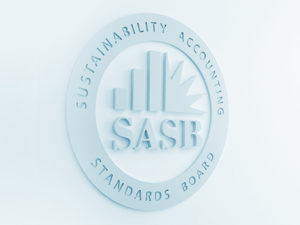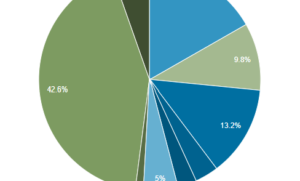We get a lot of questions about whether SASB’s FSA Credential can be used by those abroad, and the easy (and short) answer is yes!
Interpreting Materiality from Abroad

Luca Grassadonia, CFA Charterholder
For Luca Grassadonia, a CFA Charterholder, living abroad in Italy presented challenges for how to apply the U.S.-defined concept of materiality. The U.S. Supreme Court’s definition of materiality does not apply in Europe, so Grassadonia used the FSA Credential to interpret materiality for companies housed outside the U.S.
“Fortunately, the FSA curriculum elaborates further that definition of materiality as information that could influence the present and future operating and financial performance of a company,” Grassadonia said. “This particular definition is not tied to a legal concept therefore it is viable for practitioners operating in any jurisdiction.”
He added that the FSA Credential’s discussion on materiality aligned with how investment professionals view the world because of how it addresses the concepts of financial and non-financial information.
Why Get the FSA Credential?
There’s a lot of ESG data out there, and that is where SASB and the FSA Credential come in: the robust curriculum behind the credential is designed to help investment managers, consultants and even academics and students clearly see the connection between material sustainability factors and a company’s bottom line.
Grassadonia was in the first cohort of FSA Credential holders and has used his FSA Credential to help him apply the SASB standards in his analyses. For him, the value of having the FSA Credential was clear.
“I was very sure of what I was looking for and checked routinely on the Internet, so that as soon as the FSA Credential materialized I could not miss it,” Grassadonia said of the unique space the FSA Credential occupies in the sustainability space. “The program and its foundation, the SASB standards, immediately made sense to me so that I decided to delve into the standards and get the FSA Credential as soon as possible.”
Using the FSA Credential to Sift Through ESG Data
While there isn’t a specific US-to-EU mapping for each SASB accounting metric, it is possible for international analysts to leverage the SASB standards using local rules and regulations.
Grassadonia said he struggled with two issues that the FSA Credential helped solve. The first issue he overcame was how to find out what ESG information was material to a specific local business he was analyzing.
“Through the FSA curriculum I learned a tried and tested process to establish the materiality of any information to a single company,” he said. “Therefore, I am now able to scoop around every sector standard, looking for those sustainability factors that are material to that particular company I wish to analyse.”
In this case, regardless of location, the FSA Credential helped Grassadonia have a more sophisticated eye when combing through ESG-related data.
Using the FSA Credential in Financial Analyses
Similarly, the second issue Grassadonia overcame thanks to the FSA Credential was with his financial analyses. He used an accounting metric, RT0202-13, or critical materials sourcing, to help his foreign client understand why it was experiencing supply disruptions. He was able to connect the metric to potential revenue losses, and as a result his client redesigned the next generation of its electronic boards to be less dependent on specific parts.
“It may seem trivial, but as far as I know the FSA curriculum is the only body of knowledge about [ESG financial analysis] that is both authoritative and available to everyone,” he said. “It is worth it to go the extra-mile and get the FSA Credential to build a true competitive advantage on traditional fundamental analysis.”

